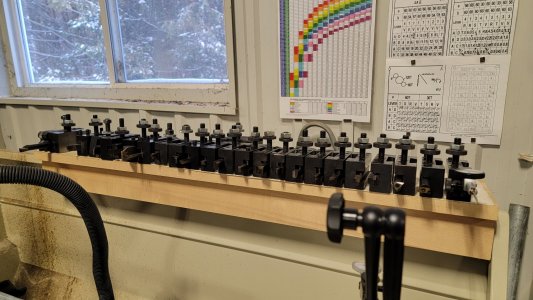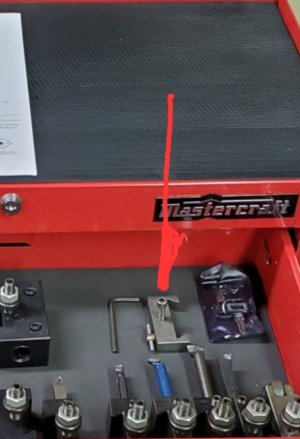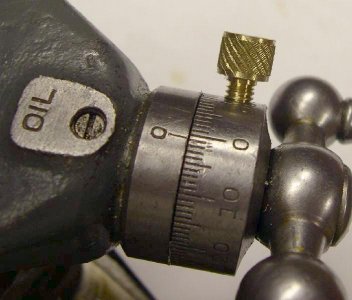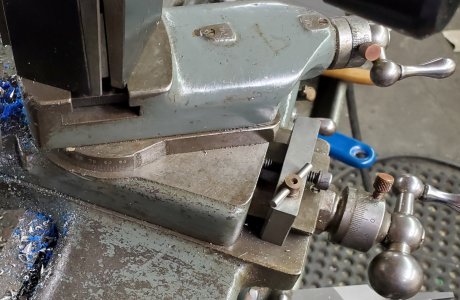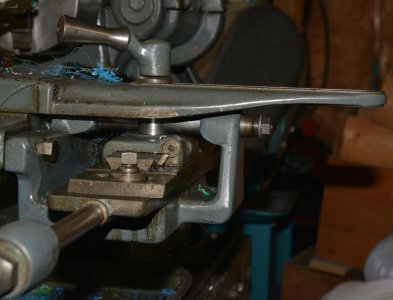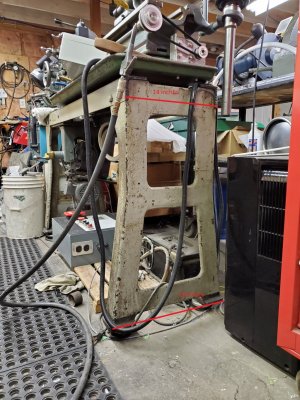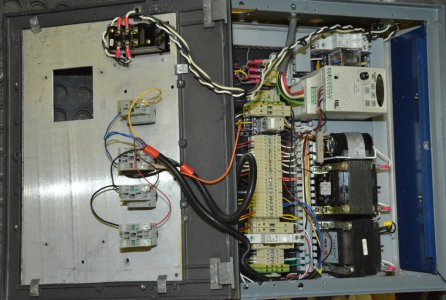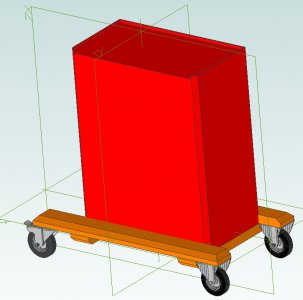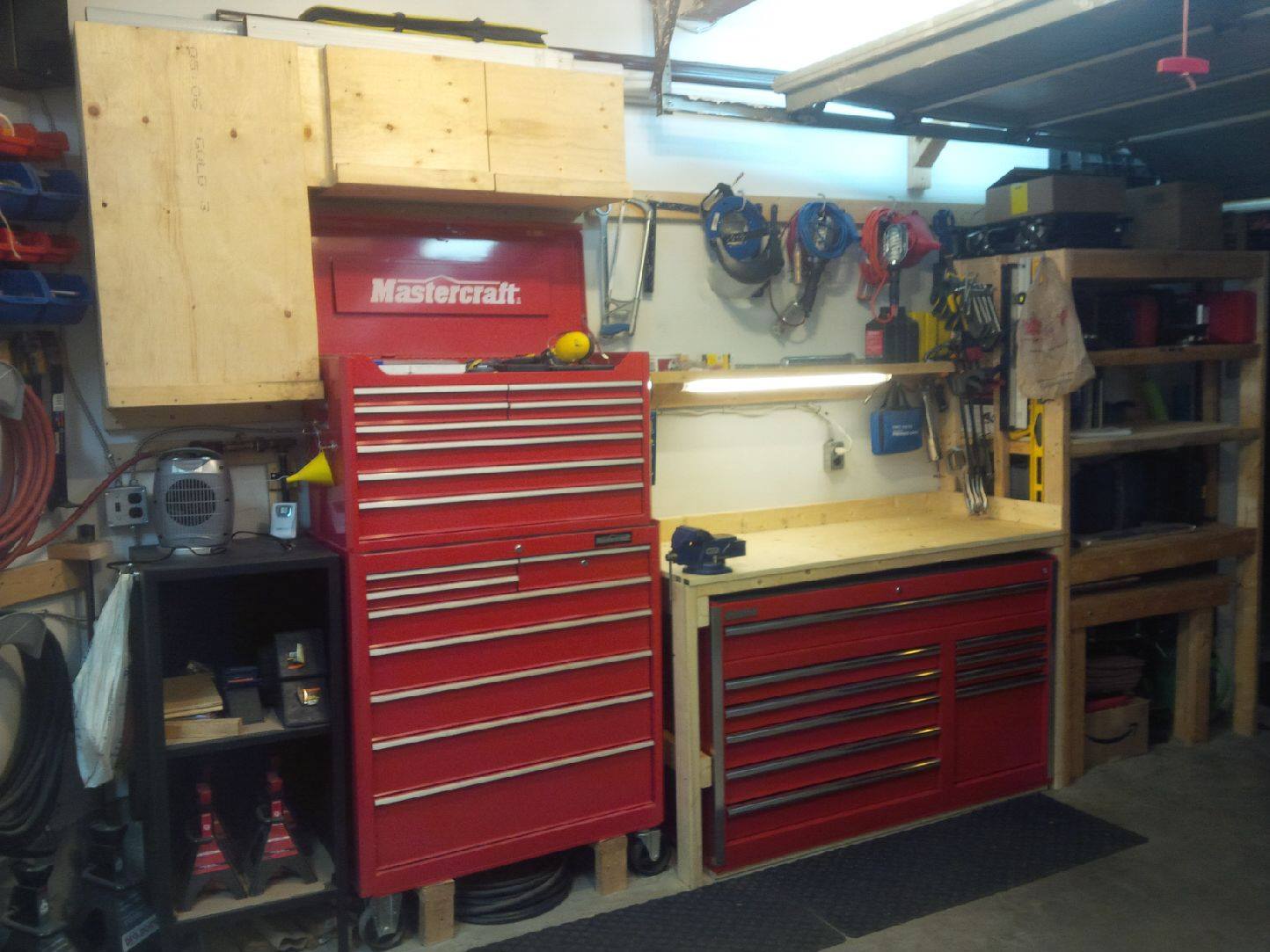I splurged and bought, on sale, a Mastercraft roll around tool chest. The gamble was that the overall height was exaggerated and would just slip under the frame of the lathe stand.

No such luck. Short by about 1.25". I figured if that was the case I'd use smaller casters since it will rarely move or even just slide it into place without casters onto a wooden base.
What I hadn't realized that if there isn't enough weight in the bottom drawer pulling open the top with all the quick change tool holders results in an instant tip over.

I could mount the lathe up on blocks. A bit higher wouldn't bother me but doesn't change the tip over problem. So the casters will have to come off and bolt it to something that will prevent it from falling over. The up side is it will hold all the lathe bits and pieces.
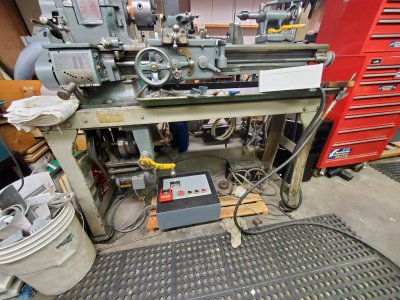
No such luck. Short by about 1.25". I figured if that was the case I'd use smaller casters since it will rarely move or even just slide it into place without casters onto a wooden base.
What I hadn't realized that if there isn't enough weight in the bottom drawer pulling open the top with all the quick change tool holders results in an instant tip over.
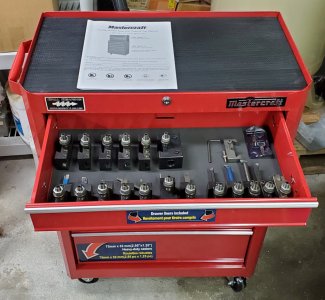
I could mount the lathe up on blocks. A bit higher wouldn't bother me but doesn't change the tip over problem. So the casters will have to come off and bolt it to something that will prevent it from falling over. The up side is it will hold all the lathe bits and pieces.

